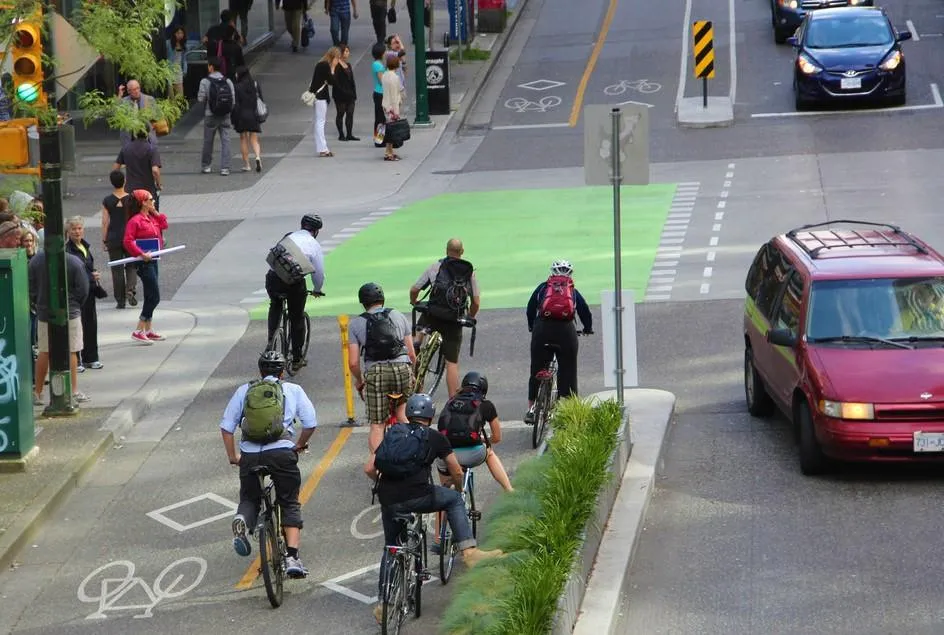
The road to a safe environment for cyclists
The tragic death of the 28 year-old Francesca Quaglia is just one the latest examples of the dangers that cyclists face every day in Milano. Rather than being an isolated event, the accident illustrates an increasing trend in traffic death involving cyclists in recent years. Since the start of the year already five cyclists have died in Milano alone. Comparative data from the EU Road accidents database from 2021 suggests that while road fatalities are generally going down in Italy, like elsewhere in the EU, the composition of traffic fatalities has changed. While the share of pedestrians killed has steadily decreased, the number of traffic death among cyclists has increased rapidly.
One might argue that the increase of traffic fatalities among cyclists simply reflects an increase in bicycles sales. When there are more cyclists, there is a higher chance that accidents will involve cyclists. Therefore, there is not much that can be done. Yet, when we compare the Italian data on traffic related deaths to other European countries, like the Netherlands for example with the highest number of cyclists per capita in the world, it becomes clear that this type of reasoning does not hold. While the Netherlands has a much larger population of bikes, 22 million, even larger than its number of inhabitants, 17 million, it has much less traffic fatalities compared to Italy. In 2021, Italy experienced 48 traffic fatalities per one million inhabitants, an increasing number involving cyclists as I mentioned before, while the Netherlands had 28 victims per one million inhabitants, with a lower share of cyclist's deaths. This suggests that something can be done to solve Milano's cyclist fatality crisis.
One important way in which transport researchers have tried to understand what can be done, is to seek lessons learned from countries that have embraced the goal of zero traffic fatalities, involving cyclists and otherwise. The Netherlands is such a country. Unlike what many people think, the Netherlands did not used to be a safe place for cyclists. In fact, in 1970, the Dutch traffic fatalities rates were some of the highest in the world. After a holistic overhaul of urban planning and transportation policy, the Netherlands now has one of the lowest traffic death rates in the world.
So, what changed? In the sixties cars had free rein in Dutch cities. In 1971 alone 3,200 people died in traffic accidents on Dutch roads, 400 of which were children under the age of 14 years. The increasing amount of deaths, especially on the streets of big cities like Amsterdam, triggered public outcry and protests. The foundation "Stop Child Deaths" was founded with the goal of safeguarding the lives of children and adolescents on Dutch streets. The protection of cyclists, it argued, should become a key priority. The foundation played a crucial role in forcing public officials to traffic fatalities and bike safety seriously. Yet, it took quite a while to reshape societal consciousness about the function of streets and traffic in a city landscape to make streets safe for not only cars, but also cyclists and pedestrians.
Two big changes were introduced. First, separated cycle tracks were created instead of painted bike lanes on roads shared with cars and trucks. This meant bike lanes that were physically separated from car lanes to give bicyclists and pedestrians their own space on Dutch streets. These separate bike lines were also created in cities with historical cobble stones streets, similar to the ones we find in Milano. A second innovation of the 1970s in the Netherlands was traffic calming spaces. This is the creation of spaces with low volume and slow moving cars around school areas and universities. This significantly reduced car traffic in places where children, adolescents and young adults play or meet. Overall it made cities much less traffic dense.
The bottom line of this short review of Dutch transport policy and traffic planning suggests that while in Italy we are still fixed on the idea that road safety is largely the responsibility of the users, cyclists, pedestrians, car and truck drivers, to ensure their own safety, Dutch policy makers have tackled the core issue, namely that the city environment itself is deadly for people on bikes or on foot, even when they exercise due caution. When we want prevent cyclist deaths, we need to embark on a systematic review of traffic safety that allows us to develop solutions that are sensitive to the ecology of movement. We need to think of transport and traffic as a complex system of interactions between different users. Traffic safety is a shared responsibility of all of us, and only if we can create a system in which cyclists, pedestrians, cars and trucks each have their own safe space, can we save innocent lives. Milano as an open and dynamic city should take the lead in this respect.